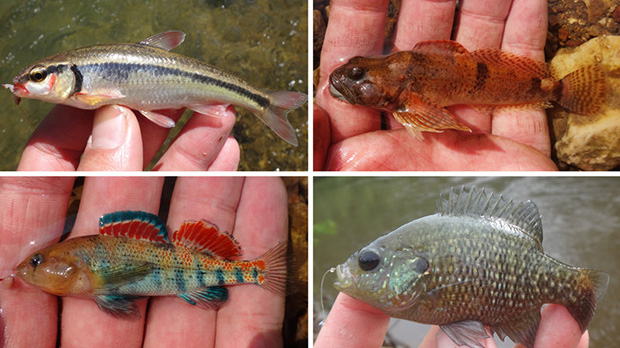
Catching the biggest fish usually comes with the biggest bragging rights, but now there’s a new breed of anglers working to hook those at the other end of the spectrum, and while the catch might not be as big, the bragging rights are.
As the owner of Tombstone Tackle bait shop in Columbia, Mo., Adam Wolf has a lot of ways catch fish.
“Night crawlers, minnows, shiners, goldfish, and the frozen bait like chicken liver, turkey liver, shad guts, shad sides, skipjack herring, vacuum seal whole shad,” says Wolf as his list of lures goes on.
Wolf likes catching big fish. Really big fish.
“I caught two 96-pound blue cats, biggest bass are probably around 10 pounds, biggest crappie I caught two three pound crappie,” Wolf says.
As Wolf’s list shows, there are many options for fishers looking for bait that the big fish will bite on, but when anglers are looking to land fish closer to the size of the bait in Wolf’s shop a new sport rises. It’s called micro fishing and it’s growing in popularity.
It’s a hobby where instead of trying to catch the biggest fish, you target the smallest fish and the largest number of species, a process known as life-listing. It’s like what birders do, but for fish caught with a rod and a reel.
Across town from Wolf’s bait shop, Michael Moore — no, not the documentary film director — is wading in shallow creek turning over rocks and looking for tiny bugs to use as bait and it looks like he’s found a few.
“Oh gosh, I think they’re eating each other — um, I have not taken aquatic entomology, but most of them are different kinds of mayflies.
Moore, a doctoral student in fisheries conservation at the University of Missouri, is on one of his first micro fishing expeditions. As schools of sand shiners flit about in a rocky pool, Moore explains the type of gear this hobby demands.
“Micro fishing you’re using the smallest size hook you can find at your local tackle stores, so like your fly fishing hooks and things like that,” Moore says. “And instead of casting, like you would with regular fishing, it feels really weird, but you’re usually just dangling the bait in front of fish that you can see.”



